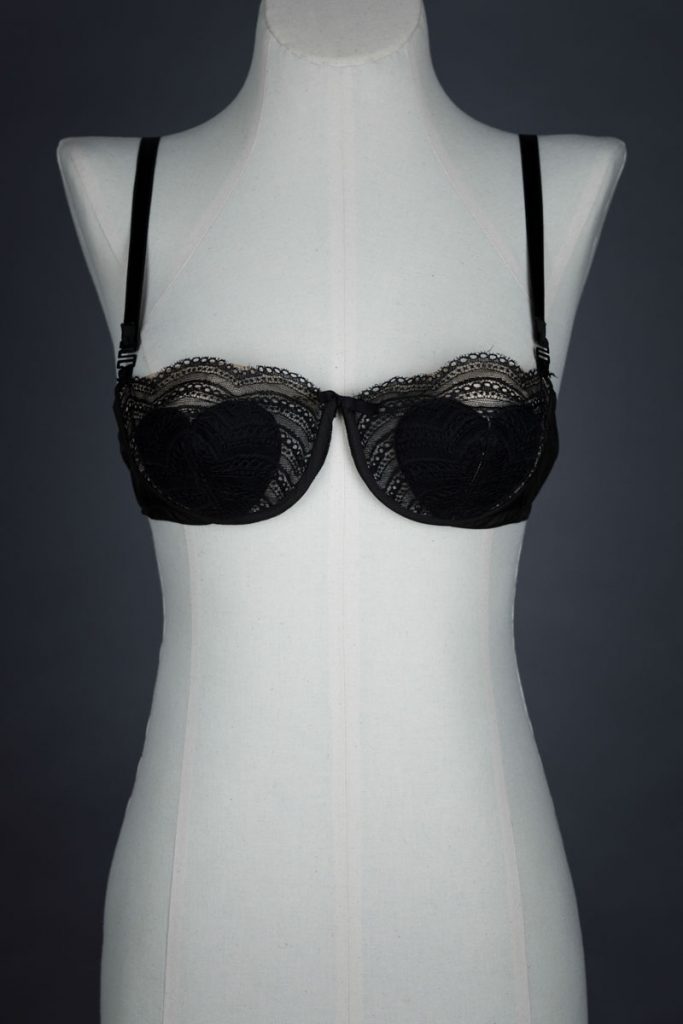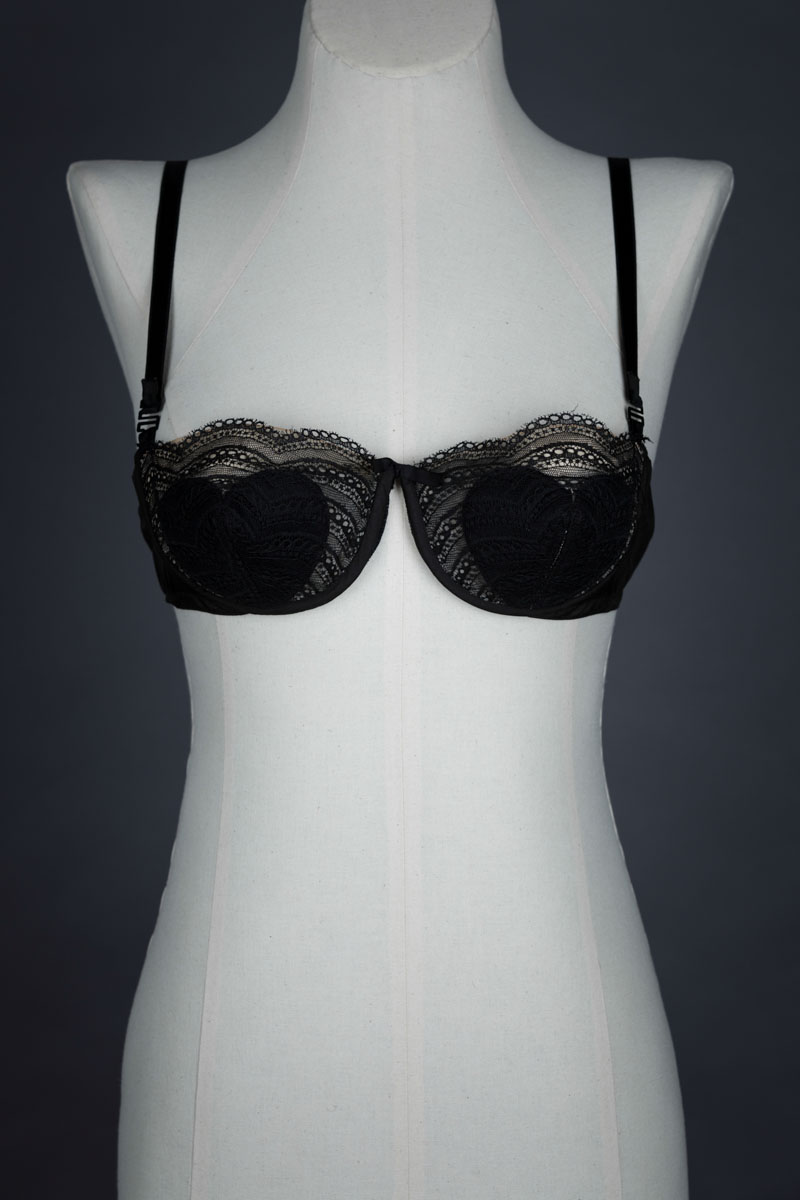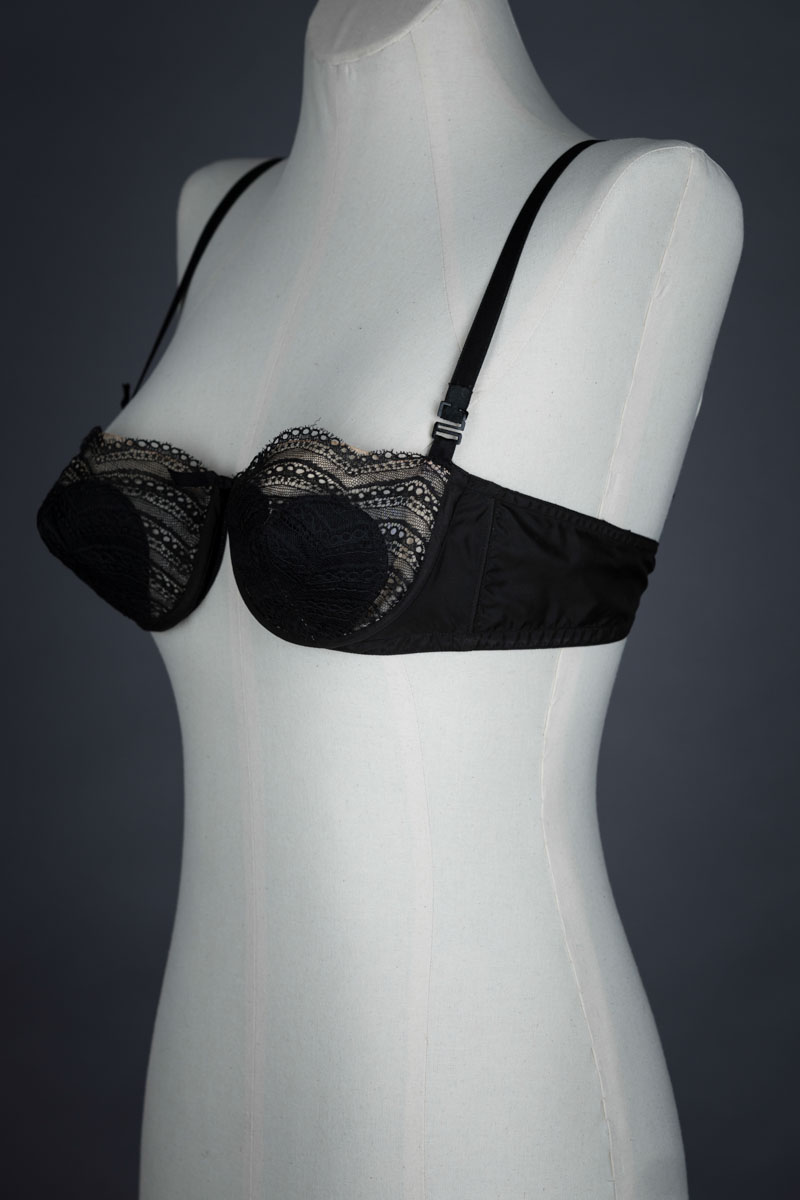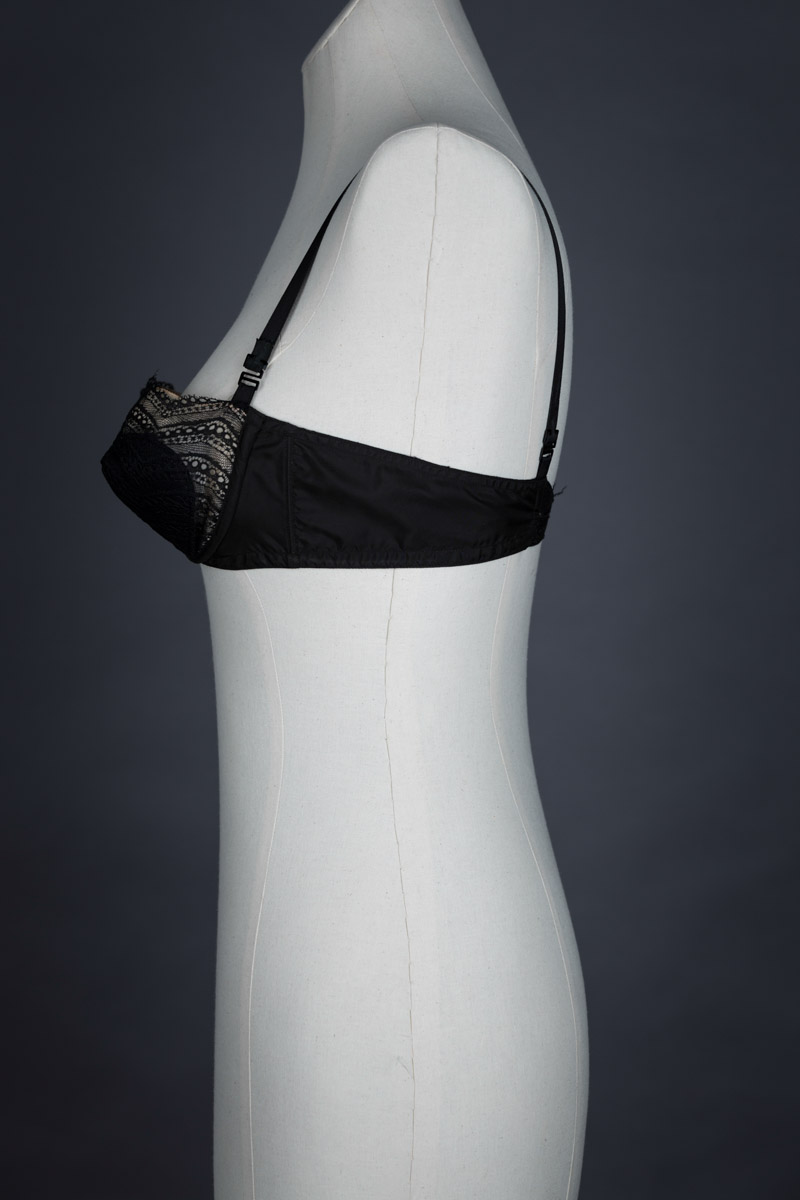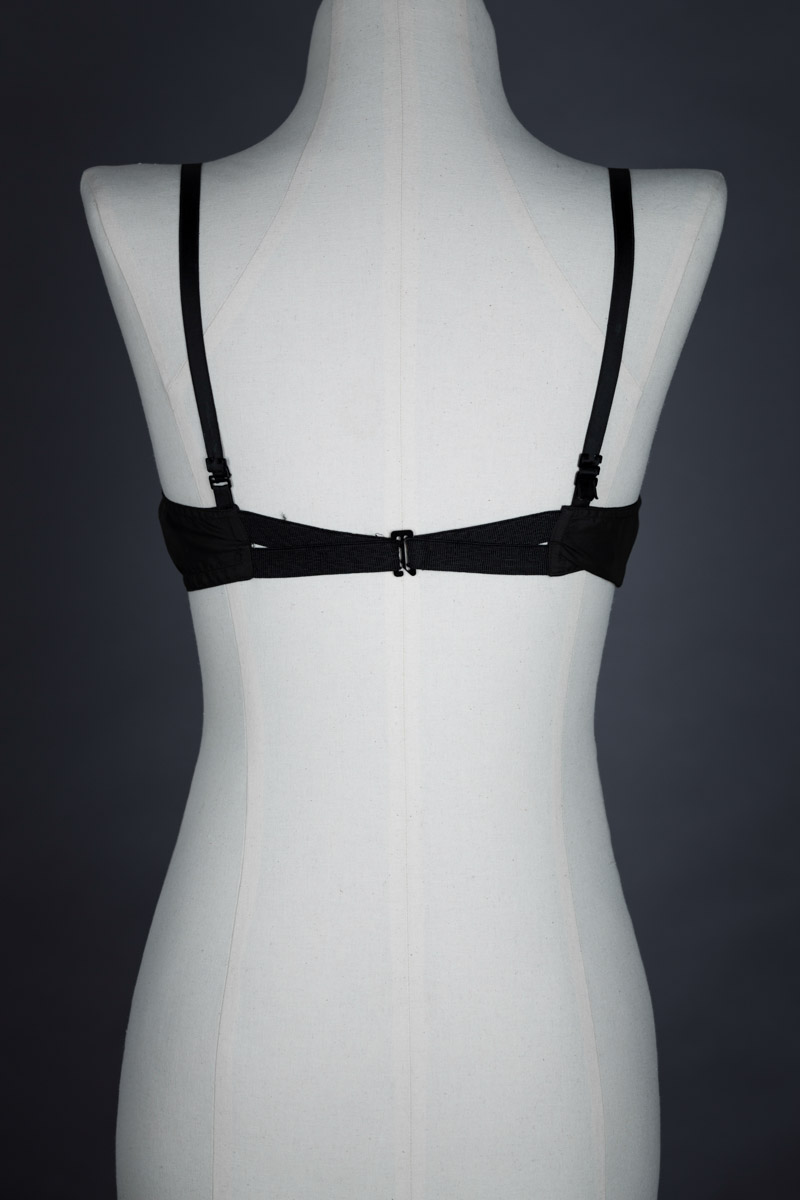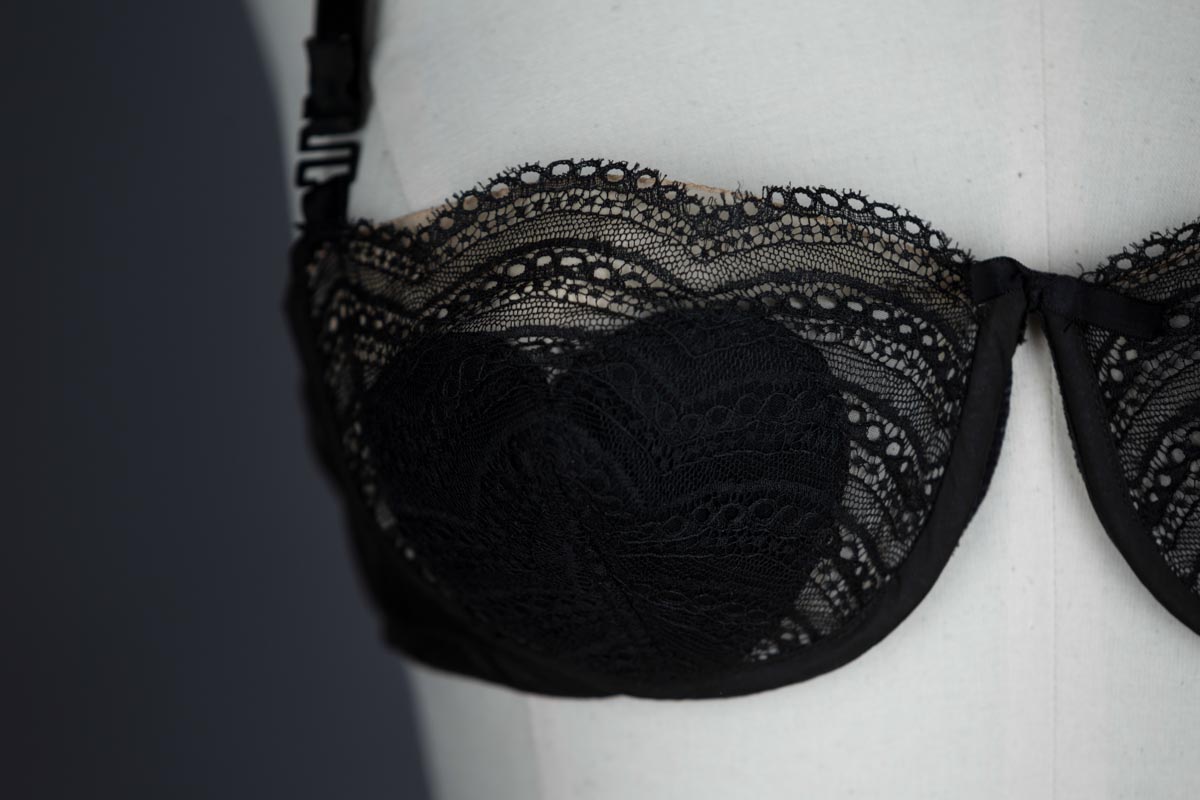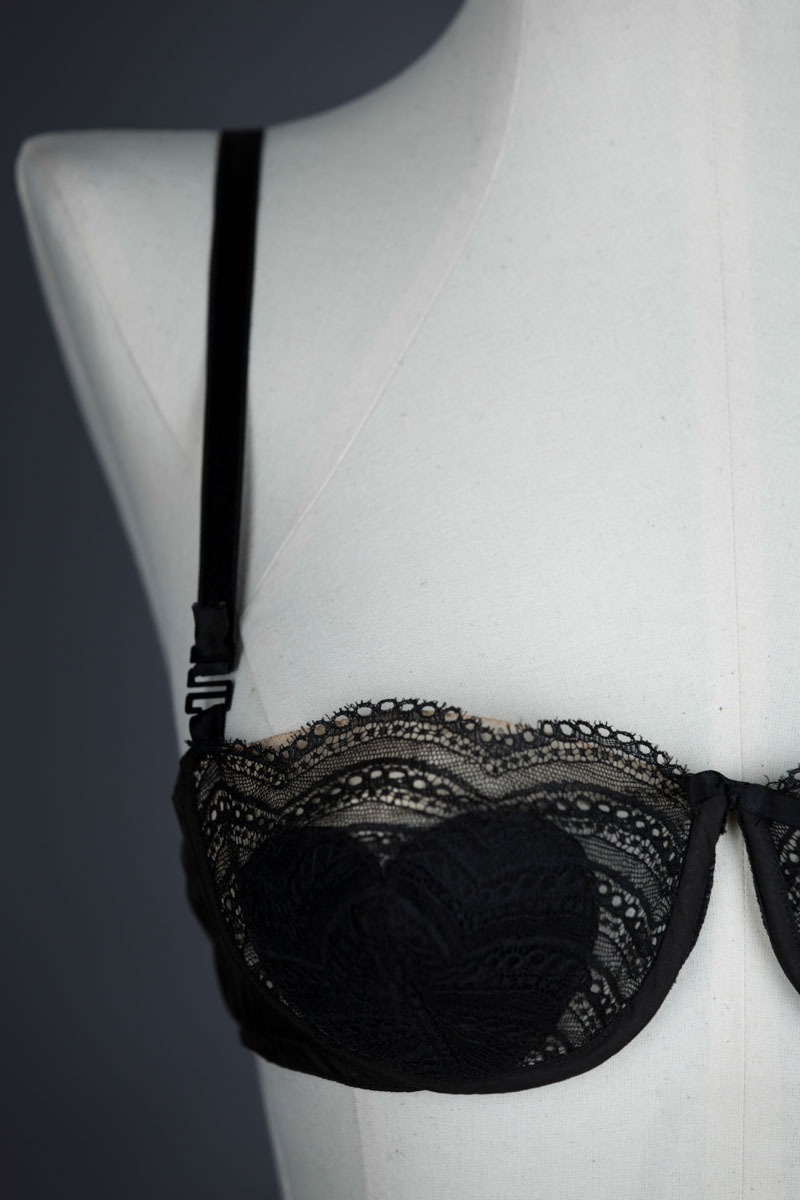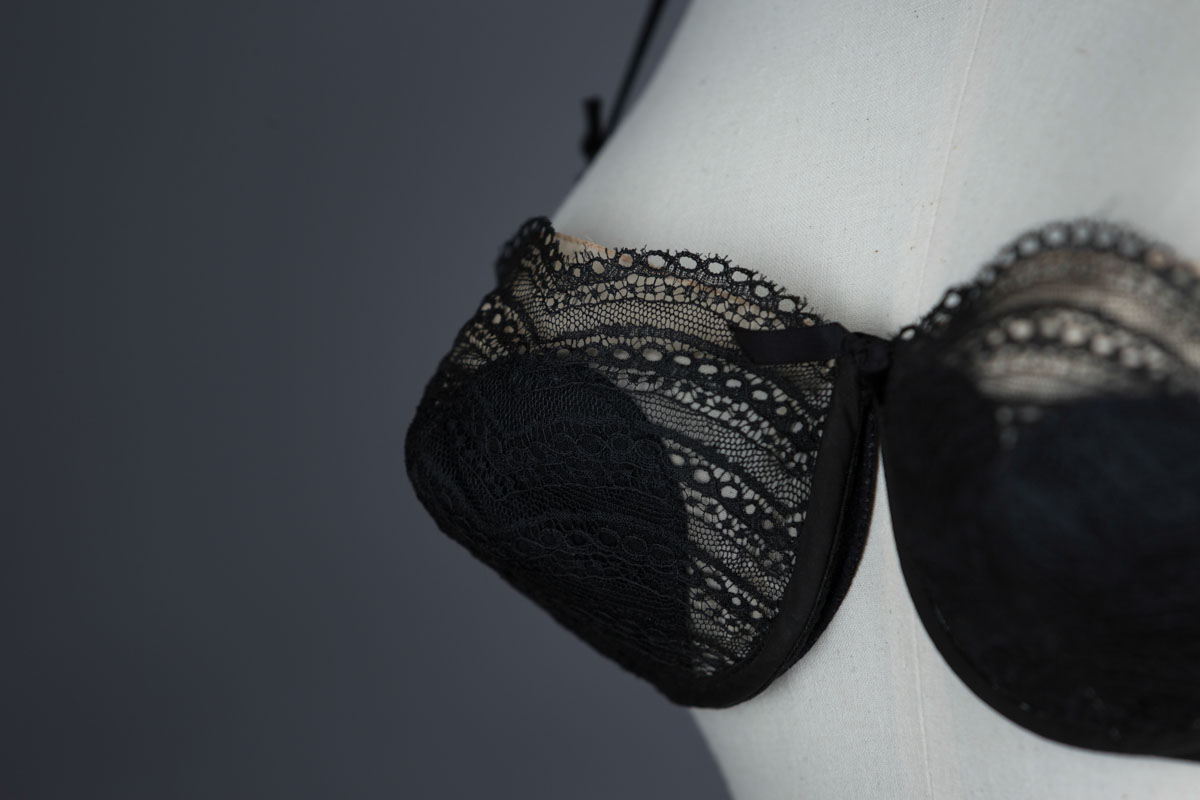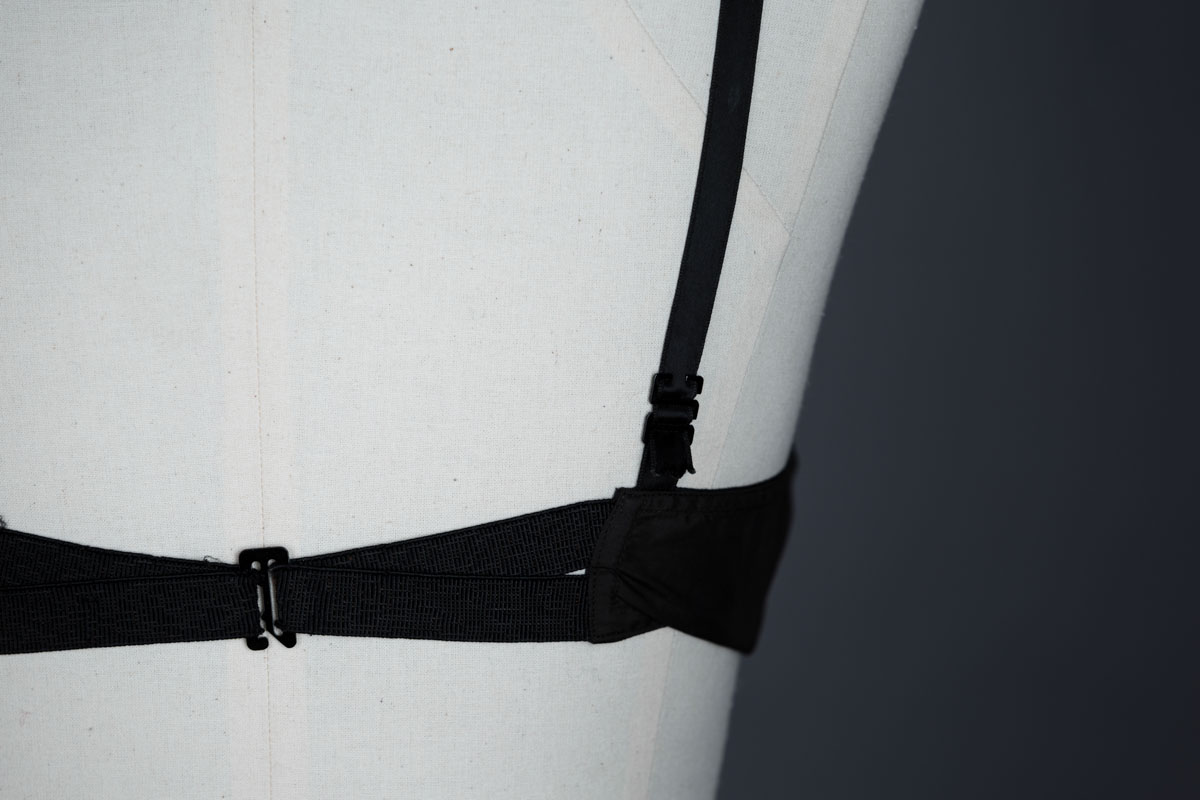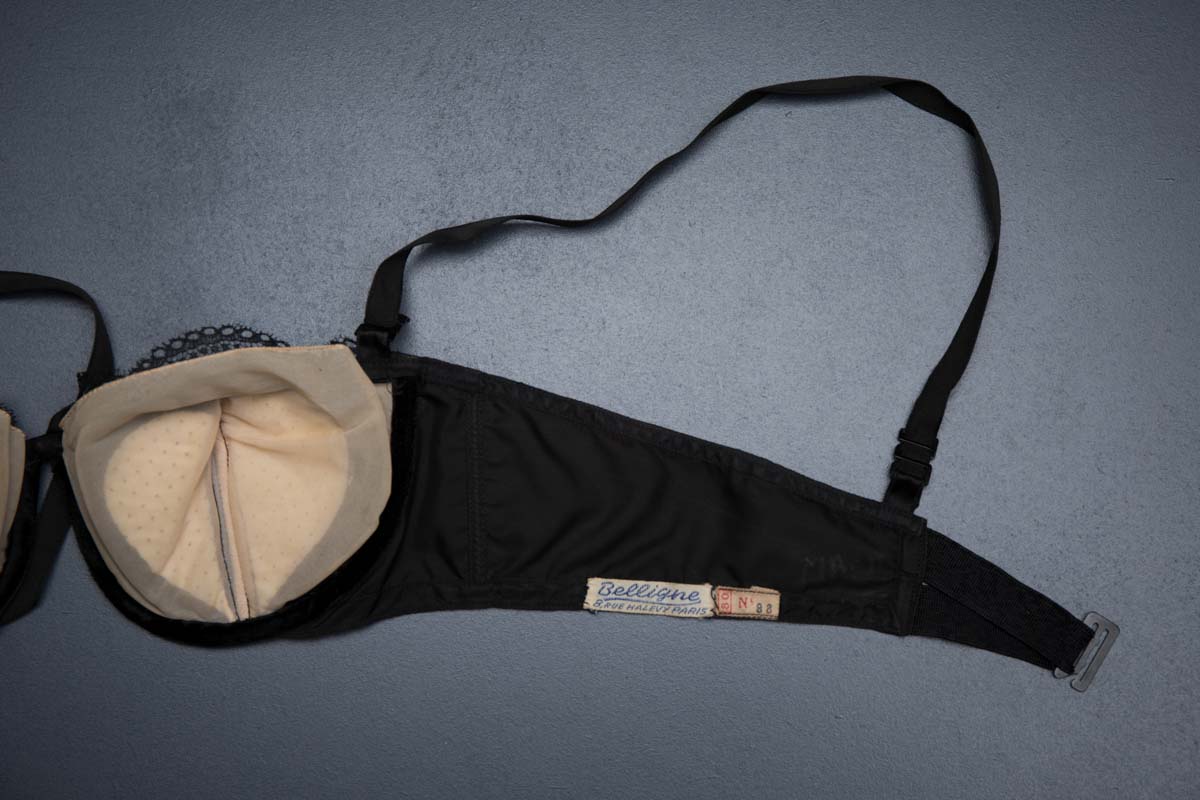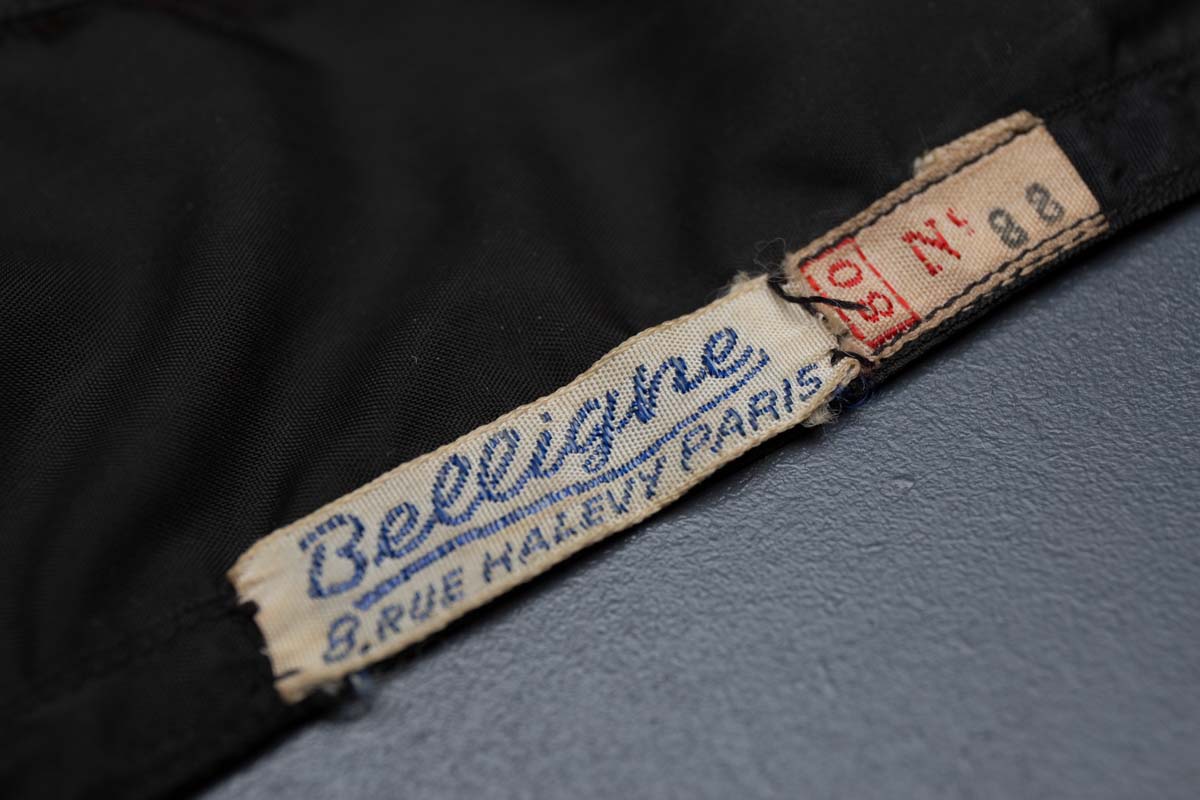Date: c. 1950s
Origin: France
Fabric: Lace and nylon
Brand: Belligne
This luxurious bra incorporates many of the technological innovations of the 1950s, transforming them aesthetically as well as functionally.
The bra cup construction of this garment is most notable. Although it’s a relatively simple cut using only a single dart for shaping, the three layer constuction offers both beautiful design and effective bust shaping. An exterior of scalloped lace and an interior of sheer nylon (which has been roll hemmed with an extremely narrow machined zigzag stitch) sandwich a panel of sturdy nylon padding, that has been carefully and laboriously bound in ribbon with a neat zigzag stitch. The layers have all been topstitched together neatly for extra security. The layering of the sheer lace, black padding and beige tulle give a very graphic affect when worn against the skin.
The bra uses a monowire-style underwire: a 3D structure that curves around the body, rather than the 2D flat underwire used in most modern lingerie. The interior of the garment encases the wire with luxurious velvet ribbon. The cradle and wings of the wire are made of a single layer of nylon, and the seam sandwiches a very narrow steel bone for vertical tension and support. Both underarm and underband seams are taped over on the interior of the garment with nylon bias tape.
Loops of elastic at the centre back offer a small amount of fit flexibility, with a single metal enamelled hook as a fastening. Shoulder straps are made of thick satin ribbon, and are adjustable and detachable at the cup apex and bra wing with specially designed metal adjuster-hooks, allowing this bra to be worn without straps too.
The garment features two labels, one stating the brand name and address ‘Belligne / 8 Rue Havely Paris’, a very centralised Parisian address that suggests the brand had a high-end boutique located there at the time. The other label states the size and style number, ’80 / No. 88′. The size likely refers to the overbust measurement in centimetres.
The first commercially produced style of underwired bra was sold in America in 1931 and the first overwired strapless bra appeared in 1934, but wiring only became common in the UK after the Second World War due to the limited availability of the metal needed to make the components during the conflict. Early underwired bras could often be extremely uncomfortable and the metal could easily poke out through the fabric after wear, so it became common for the inside of the garment to be padded or covered with velvet where the wires touched the skin in order to improve comfort and reduce the likelihood of the wires escaping.
Padding was not just used to create uplift, it was also used to make breasts appear larger and an increasing numbers of products became available in the mid-1930s to enable women to boost what nature had provided. Options available in the 1950s were more extensive and technical, including: padding built into a bra, made from foam rubber, felt or eiderdown; removable pads that slipped inside pockets in the cups; separate ‘bust forms’ or ‘falsies’ to be placed inside any brassiere.
From the collection of Karolina Laskowska
